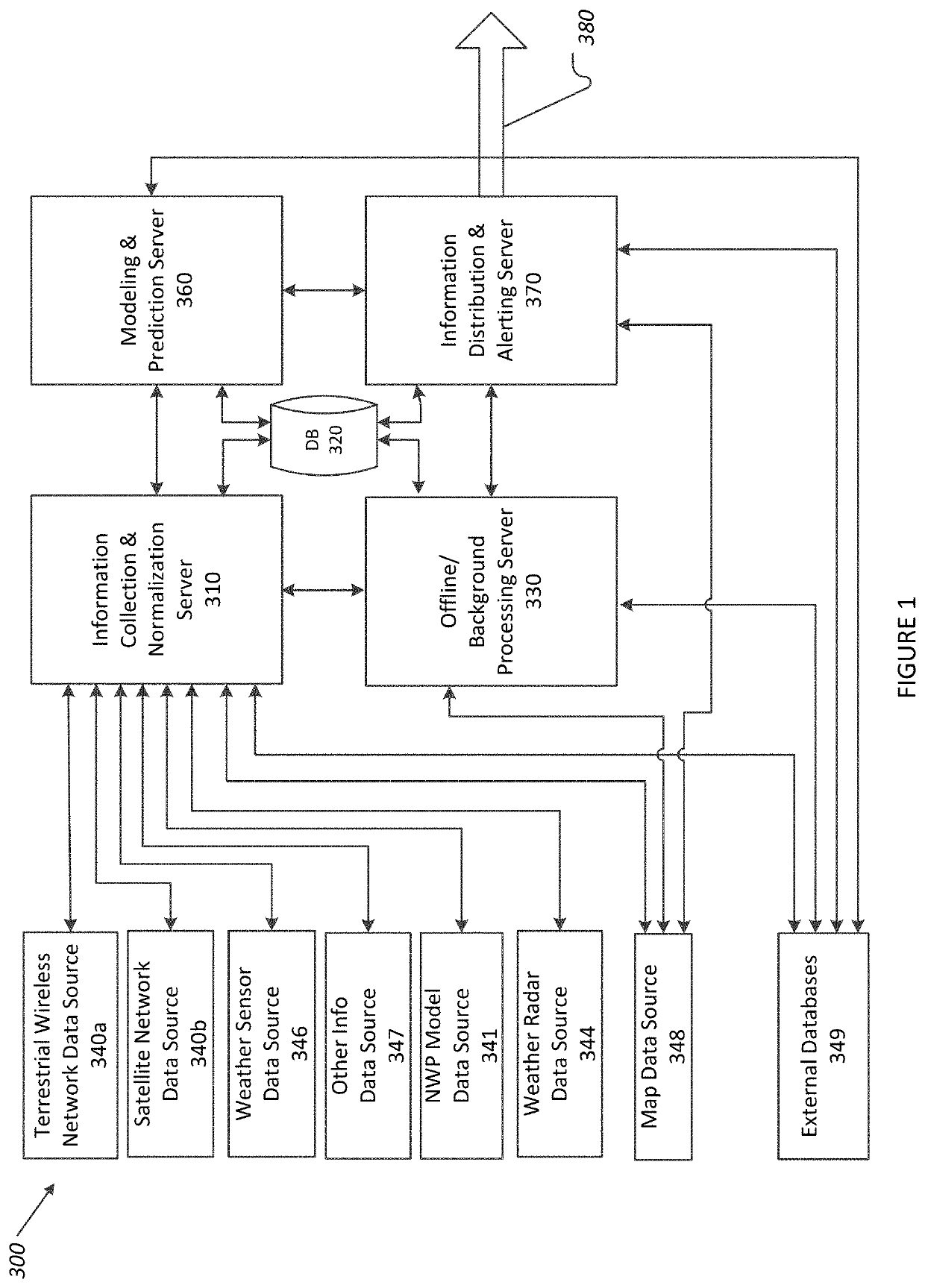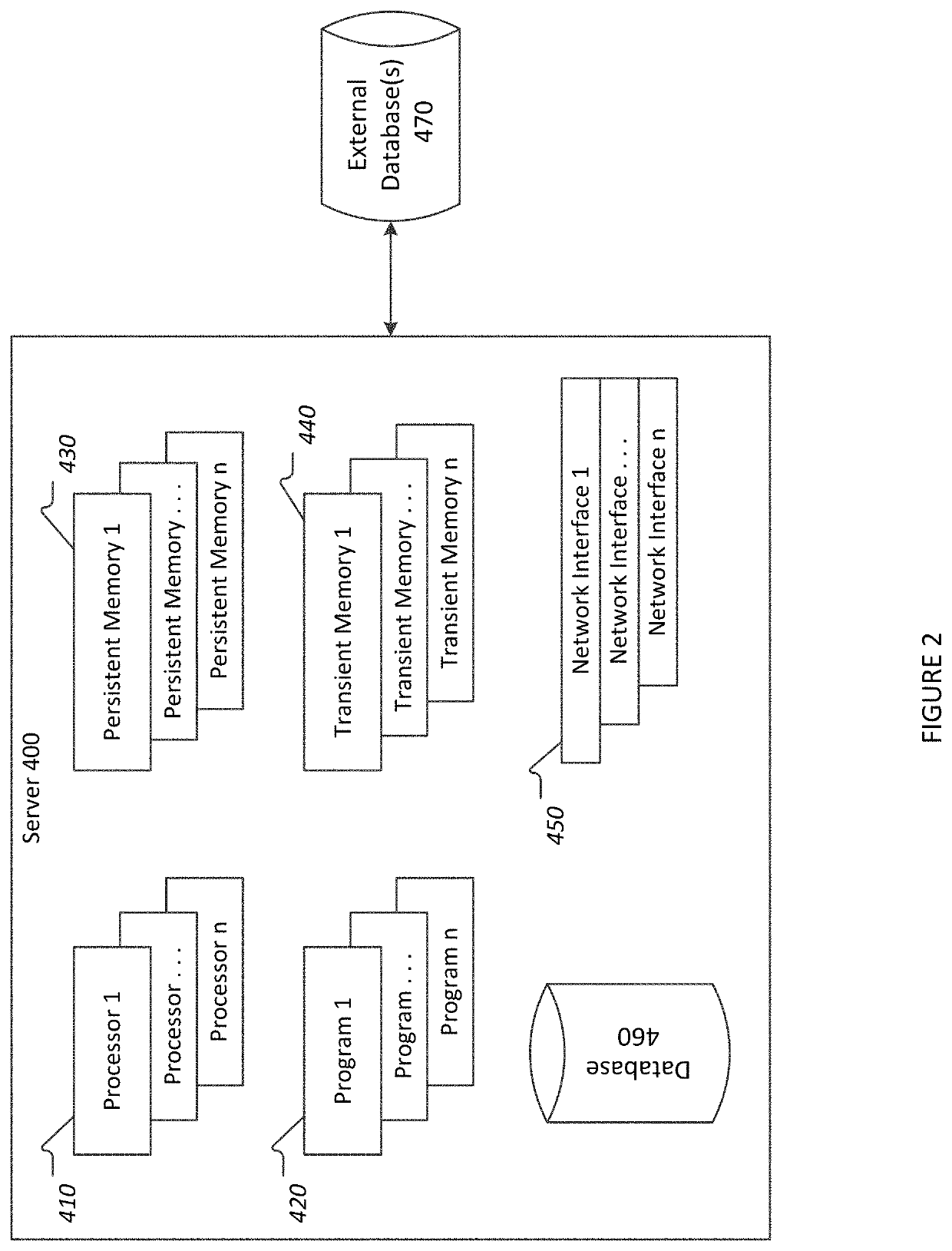Forecasting method with machine learning
a machine learning and forecasting technology, applied in the field of forecasting methods with machine learning, can solve the problems of large inaccuracy of radar-based storm tracking and surface precipitation estimates, insufficient classifications for generating high-speed forecasts based on, and errors in extracted motion vectors and calculated precipitation estimates
- Summary
- Abstract
- Description
- Claims
- Application Information
AI Technical Summary
Benefits of technology
Problems solved by technology
Method used
Image
Examples
Embodiment Construction
[0033]5.1 Overview
[0034]The systems and methods described herein provide a mechanism for collecting information from a diverse suite of sensors and systems, calculating the current precipitation, atmospheric water vapor, or precipitable water and other atmospheric-based phenomena based upon these sensor readings, and improving forecasts of future weather information including humidity, precipitation, storm movement, and other atmospheric-based phenomena.
[0035]“Real time” meteorology equipment, such as weather radar, provides precipitation maps showing precipitation intensities and locations on a short time interval, e.g., less than a fifteen minute interval, or optionally less than a five minute interval, or optionally a one minute interval or thereabouts. Diverse meteorological phenomena have diverse temporal evolution (e.g., humidity changes much more slowly than does precipitation intensity). Accordingly the definition of “real time” or “most current data” may depend on the meteo...
PUM
 Login to View More
Login to View More Abstract
Description
Claims
Application Information
 Login to View More
Login to View More - Generate Ideas
- Intellectual Property
- Life Sciences
- Materials
- Tech Scout
- Unparalleled Data Quality
- Higher Quality Content
- 60% Fewer Hallucinations
Browse by: Latest US Patents, China's latest patents, Technical Efficacy Thesaurus, Application Domain, Technology Topic, Popular Technical Reports.
© 2025 PatSnap. All rights reserved.Legal|Privacy policy|Modern Slavery Act Transparency Statement|Sitemap|About US| Contact US: help@patsnap.com



